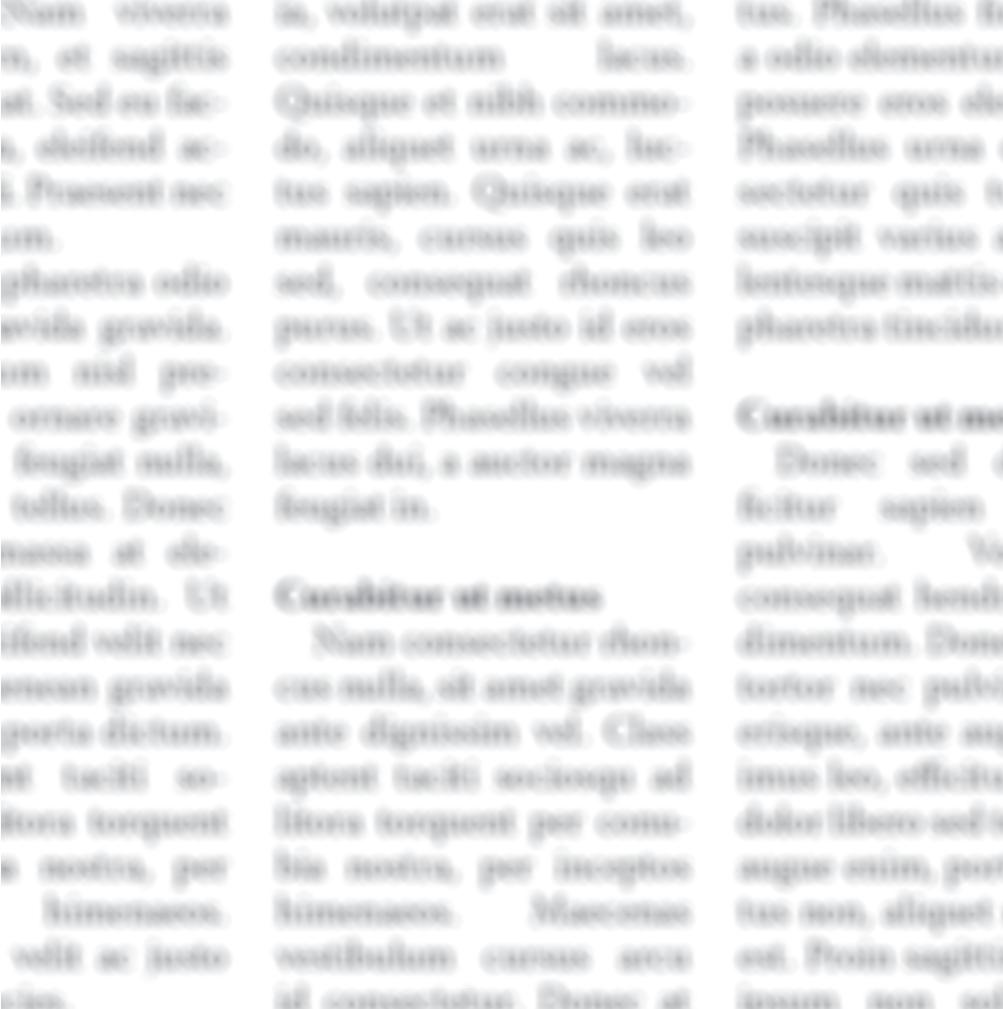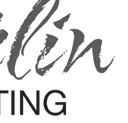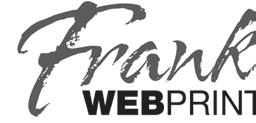r appi n g Pa p e r I s s ue!






The Contributor is celebrating its 12th anniversary this year. We asked former editorial staff members to share what they learned from their experiences working at the paper from the inside. Lots has changed over the years, but we’ve always offered diverse perspectives on homelessness and genuine opportunities for advancement.














New vendor training Monday, Wednesday, Friday 10 a.m. at Downtown Presbyterian Church, 154 5th Ave N. and 10:30 Thursdays at Room in the Inn, 705 Drexel St. Next vendor meeting Dec. 11 at DPC 9:30 a.m.


The paper you just paid for was bought by someone else first, otherwise it wouldn’t exist. That’s how The Contributor works. A vendor who experienced homelessness paid 50 cents for this paper and then sold it to you. By buying it and taking it with you, you’ve just encouraged that vendor to buy another. BOOM! That’s the solution. Now keep reading. This paper has something to say to you.
Street papers provide income for the homeless and initiate a conversation about homelessness and poverty. In 2007, The Contributor founders met at the Nashville Public Library downtown to form one. In a strike of lightning we named it The Contributor to infer that our vendors were “contributors to society,” while their customers could contribute to their work. But, thunder from lighting is always delayed … It took three years, but Nashville embraced us like no other city in the world. The Contributor became the largest selling street paper per-capita on the globe. And today 50 percent of our six months or longer tenured vendors have found housing. BOOM! The thunder has struck.

The Contributor is a different kind of nonprofit social enterprise. We don’t serve meals or provide emergency shelter. We don’t hire people in poverty to create products or provide a service. Rather, we sell newspapers to homeless people who work for themselves. We train them to sell those papers to you, keep the money they earn, and buy more when they need to replace their stock.
Our biggest fans don’t always get this. Like lightning without the thunder, they see the humanity of the vendor but misunderstand the model. Case in point: In 2013 during a funding crunch, a representative of one of Nashville’s biggest foundations exclaimed, “I’m such a big fan that I never take the paper!” We responded, “Well, that’s why we are in a funding crunch.” BOOM! Thunder was heard. Taking the paper makes our
business. Until making these sales, many of our vendors had never experienced the satisfaction of seeing their investment pay off. And when it does, it liberates! They have become “contributors” to their own destiny. And Nashville has become a city of lightning and thunder. BOOM!
Now that you are a SUPPORTER , become an ADVOCATE or a MULTIPLIER
You are already a SUPPORTER because you know that taking the paper makes the model work. You bought the paper and you are reading it. Now your vendor is one copy closer to selling out, which is exciting!
Now you can become an ADVOCATE when you introduce your friends to your favorite vendor, follow us and share our content on social media, contact us when you witness a vendor in distress or acting out of character, or explain why others should pick up a copy and always take the paper when they support a vendor.

Cathy Jennings, Chair Tom Wills, Bruce Doeg, Demetria Kalodimos, Ann Bourland
Linda Bailey • Amanda Haggard • Hannah Herner • Erica Ciccarone • Tom Wills • Ridley Wills II • Norma B. • Mary B. • June P. • Cynthia P. • Jamie W. • Jackie S. • Mr. Mysterio • Tanya Ramirez • Elizabeth Jones

Cathy Jennings • Tom Wills • Joe First
• Andy Shapiro • Michael Reilly • Ann Bourland • Patti George • Linda Miller • Deborah Narrigan • John Jennings • Barbara Womack • Colleen Kelly • Janet Kerwood • Logan Ebel • Christing Doeg • Laura Birdsall
• Nancy Kirkland • Mary Smith • Andrew Smith • Ellen Fletcher • Michael Chavarria
Will Connelly, Tasha F. Lemley, Steven Samra, and Tom WIlls Contributor Co-Founders
Editorials and features in The Contributor are the perspectives of the authors. Submissions of news, opinion, fiction, art and poetry are welcomed. The Contributor reserves the right to edit any submissions. The Contributor cannot and will not endorse any political candidate.
Submissions may be emailed to: editorial@thecontributor.org
Requests to volunteer, donate, or purchase subscriptions can be emailed to: info@thecontributor.org Please email advertising requests to: advertising@thecontributor.org


Mailng Address
The Contributor P.O. Box 332023, Nashville, TN 37203 Main Office: 615-499-6829 Vendor Office: 615.829.6829


model work — not taking it breaks it.
And selling the paper twice doesn’t just fund the paper, it funds housing and change. BOOM! Our vendors report their sales to qualify for subsidized housing and even for standard housing deposits and mortgages. They don’t consider your buying the paper a “donation.” It is a sale. When they sell out, they buy more and build the paper trail of a profitable
And, you can become a MULTIPLIER when you advocate for us AND directly donate to us or become an advertiser or sponsor of The Contributor. Our income stream is made of 50-cent- at-a-time purchases made from our vendors, matched by contributions, ad sales and sponsorships from multipliers like you. Because our vendors are business owners, your donations are seed-money investments in their businesses and multiply in their pockets. Every donated dollar multiplies four-to-seven times as profits in the pockets of our vendors.
Thanks for contributing.
Proud Member of:

Printed at:
Follow The Contributor:
Copyright © 2018 The Contributor, Inc. All rights reserved.
In the Oct. 9, 2019 issue of The Contributor, I wrote about the night riders, primarily in Robertson County, who, in 1907, burned private barns and tobacco warehouses to protest the monopoly that the American Tobacco Company had that prevented tobacco growers from receiving equitable prices. In 1908, there was another group of night riders — this time in Lake and Obion counties.

The night rider episode was a dispute over the title to Reelfoot Lake and the surrounding land. Created by the violent earthquake of 1811-1812, the lake filled with fish supplemented the diets and incomes of perhaps a majority of families living in the
vicinity. Although claims on the land existed prior to the earthquake, the local population considered the lake public domain.
When the West Tennessee Land Company quietly purchased old claims and began preparations to drain at least part of the lake and convert it into cotton land, the mostly poor residents of Obion and Lake counties were, rightfully so, furious.
On the night of Oct. 19, 1908, after several weeks of increasing violence, masked riders kidnapped two officers of the West Tennessee Land Company, R. Z. Taylor and Quinton Rankin, from Ward’s Hotel in Walnut Log, Tenn. The night riders murdered Rankin, but
Taylor managed to escape by hiding in a swamp under a cypress log. He was found 24 hours later, disoriented and wandering in the swamp.
Gov. Malcolm Patterson took charge of the situation and arrived at Reelfoot with the Tennessee National Guard. By the end of October, nearly 100 suspects had been arrested and were incarcerated in a make-shift camp set up by the National Guard. Their treatment by the Guard was harsh and two of the prisoners died while awaiting trial. Eventually, six men were convicted of murdering Quinton Rankin and sentenced to death.
In 1909, the Tennessee Supreme Court overturned their convictions. Public opinion
heavily supported the plight of the Reelfoot Lake people. As a result, the State of Tennessee acquired title to the lake in 1914, ending the threat of private ownership. In 1925, the state purchased land surrounding the lake and established the Reelfoot Lake Park and Fish and Game Preserve. From the 1960s to the 1980s, the state made a series of improvements, including a visitor’s center, a museum, lodge, restaurant and an airplane landing strip. Today, Reelfoot Lake attracts thousands of fishermen, duck hunters and nature lovers, who particularly enjoy seeing the American bald eagles who spent the winter months there.


I’m feeling sad, grateful and blessed. I’m very grateful for my experience with The Contributor paper. I meet so many different people out here. Most are very nice, but there’s still some angry people out here a lot. Sad but true. As some know, I sell papers at Bi-Rite on Belmont Boulevard. Great people at this store. They help me a lot. I’m feeling sad this year, too. I lost my little brother a couple years ago this time of year. Now, I’m watching my mama at 87 years old get ready with God. She’s going to see and be with my little brother and her baby boy. I don’t want her to go (selfish, huh?), but I’m so tired of seeing her hurt.
So everyone feel what you do. But be grateful ’cause tomorrow might not come. Or it could be worse. Happy Holidays.
My cats are tickled to death about the holidays even though this is Paisley’s first Thanksgiving. They will get lots of turkey and they all are getting ready for reindeer lessons because they want to help Santa and help guide his sleigh. Pressley tells the other cats to be ready for reindeer and elf lessons at 9 a.m. I also think that they try so hard and they have been told, “If you don’t show up for reindeer practice there will be no more reindeer games.” But I tell Pressley, Lilly and Paisley you better be good because Santa Clause is watching y’all. He’s everywhere and these cats are my babies and Pressley tells the cats outside to be ready for reindeer and elf practice or there will be no more reindeer games. I love my cats they are my babies.
It’s funny how a color with such a negative connotation can actually be — as it is to my family of three — quite the opposite. It has often been said, “Why so blue?” “Singing the blues,” “I’ve got the blues,” “Blue Christmas,” “Don’t make my brown eyes blue,” etc. There are several reasons why blue is an inspiring color and an original way to show respect where respect isn’t always given. Here are some examples, in no particular order.
One example is the blue puzzle piece, which is a symbol used for those with autism spectrum disorder.
Another example is firemen and their medics who all should hear, “Thank you for your service,” whether current or retired, or those who have jobs within the department or are no longer with us. Of course, it’s your choice whether or not to say it to the health/codes inspector! (The blue would be referring to the city fire and EMS shirts.) Just about everyone has needed their services or known someone who is or was one. One of The Contributor’s volunteers used to be a fire chief in another city. I have known some personally from several places. Some we don’t know personally but have made a personal impact on our lives. One night last year my husband had to take an ambulance to the E.R. due to an intestinal issue that would’ve killed him if he didn’t make it on time. Don’t know which fire company number it was, but thank you!
On the evening of Sept. 24 last year, at approximately 9 p.m., the #3 fire department and the #3 EMS ambulance showed our then two year old daughter what we have taught her — that they help people — when she needed six stitches in her head. I do not recall the names of the two women in the ambulance, but we would
especially like to thank the woman who was in the back of the ambulance with her and I. Before that night, my daughter didn’t get as excited to see an emergency vehicle as she does now. She used to be bothered by the sirens because she didn’t know exactly where they were coming from or what they were. Over time, we’d point to the vehicles and tell her, “that’s a fire truck, ambulance, or in some cases ‘a fire car’ (a car that looks like a police car but has red lights), and they help people.
The sounds she was leary of over time turned into something exciting for her. Now she points them out to us even if the sirens aren’t on. The same is said regarding police cars, which she is happy to see too “because they help people.” The woman in the ambulance we wish to thank made the trip to the hospital a happy experience for our daughter, who kept smiling during the whole trip. She even hugged the woman after we arrived.
Another group that’s short-handed, overworked, and under-paid is law enforcement. It is understood that like any line of work, there are a few that should have found a different line of work. However, it is rare to give credit to the good.
First, I’d like to say, “thank you for your service,” to Metro Nashville Police Department, Sheriff’s department, Metro Parks Police, and etc., whether current or retired, and to those no longer with us, some of which have made a positive personal impact. They are called “Nashville’s Guardians” for a reason. They do cold checks for the houseless, welfare checks for people’s well-being, they give escorts in various ways to ensure people get where they need to get safely, and other things to make sure people are safe.
One night in 2010 shortly after the flood, I was driving down Gallatin Pike heading home toward Madison in a lemon I’d had for almost two days. I felt like I was getting a little tired, but not too tired to drive. As I approached a stoplight, it changed from yellow to red. I hit the brakes, which were wearing so the sound drew attention, and almost half the car was over the line. Seconds later “E. Mumaw” pulled me over while the light was still red. I guess I was a little disoriented because the papers I needed were on the seat next to me and I didn’t realize it. I was also having trouble with a few of my windows. When his head went towards the window, he noticed right away something was wrong with the car. He asked if the air was working. I said, “No, but there’s something coming out of the vents.” He told me to immediately turn it off the air, helped me with the windows and told me to leave all the windows down, and radioed an officer in the precinct close to my home to be waiting to make sure I made it safe. Somehow carbon monoxide or something was coming out of the vents.
There are more good things than bad that people in general can overlook. If people are shown gratitude at their job they either become better employees or stay good employees. It’s difficult to do a job well when you’re judged a lot. Try saying, “Thank you for your service” to any of the aforementioned. If they hadn’t given you a reason not to say it, you will realize there’s more good than you think. Saying it to the Sheriff’s office may seem sarcastic because they literally serve you, but even when my family got evicted (for financial reasons and at the time, lack of affordable day care), we taught our daughter that the Sheriff was not
the bad guy. We showed her what vehicles and uniforms looked like and she wasn’t afraid. The Sheriff’s job was to serve and evict. The Sheriff didn’t miss rent payments, we did.
This goes back almost a generation ago when an old friend of mine became a police officer (in another city to remain nameless) to set a positive example. (The last time I saw him was 13 years ago, and because I’m not sure what he is currently doing, his name will not be printed for privacy purposes.) During his first couple of years, he went from having a partner to getting a K-9 (Draco) so he wouldn’t have to have a partner. He took care of his mother. He got shot in the shoulder saving a woman and her son in a domestic call and gave the little boy a toy police badge. He did other positive things in a city where there were few, if any, that were like him during at least a seven year span of time. I will keep this positive, so no mention of the negative. Setting a positive example is also why some people I knew became firemen.
Another good thing in Nashville that should be mentioned is the couples cold church shelter in Madison that started after a couple froze to death in their car years back. Area officers were involved in making that happen. If you want changes, be the positive changes.
One last category to recognize is lawmakers and city council members. After all, we are in the state capital. If you have ever wondered what bills/ amendments/legislation might be passed or wish to be more informed, just watch a meeting from home on Channel 3.
We are proud to call Nashville home, so thanks, and be thankful.
Ever since the 2016 presidential election, we often hear everyone from news anchors to pundits to our neighbors repeat a popular refrain: “This is the most divided our country as ever been.”
But one art exhibition in Nashville takes a hard look at the divisions that our government drew in the past. Red Line by Nashville native Omari Booker, now on view at Channel to Channel in Wedgewood-Houston, calls our attention to the enduring legacy of systemic racism, the ripples of which we still see today.
Redlining — the practice of denying mortgages and loans to people based on where they live — began in an official capacity in 1934, when the federal government created “residential security maps” that divided cities into areas based on their financial investment risk. “Type D” areas were deemed the most risky for supportive programs instituted by the Federal Housing Authority to incentivize home ownership, giving banks and insurers the green light to deny support to people living in and moving to these neighborhoods. This quickly extended to everything from supermarkets to education, deepening the lines of division between blacks and whites in every urban center in the country.
“Gentrification doesn’t really happen without redlining,” says Booker, “without that separation in the first place.”
Booker is the curator of Woodcuts Gallery & Framing on Jefferson Street, a 30-year-old institution that has made art accessible to Nashvillians of every budget and brought internationally acclaimed artists to the city — particularly black artists. This job wasn’t Booker’s first connection with North Nashville. As a child, he spent summers in Hadley Park — you can see a gorgeous mu-
ral of him and his sister as children on the Charlotte Avenue stretch of murals called Off the Wall — and he studied art at TSU. Booker was instrumental in starting the Jefferson Street Art Crawl, which is now in its fourth year, and he is included in the Frist Art Museum’s stunning exhibition Murals of North Nashville Now, which is located in the Conte Community Arts Gallery through January. (Admission to the Conte Community Arts Gallery is free of charge.)
Booker’s eight oil paintings are hung on two walls of the gallery. All revolve around the shape of a circle, which is the same size in every painting, and in every painting, it is encircled by dark red razor wire. The titular piece in the exhibition is also the largest. A brown circle is outlined with several layers of the razor wire, positioned in the center of a field of peachy pink. Booker’s brush strokes are large and expressive, the flesh-tone colors imbued with yellow. Much like the maps that the government drew to segregate blacks and whites in the 1930s, Booker’s painting shows us the hard barrier between races that was reinforced.

His piece “Do You Play Basketball?” uses the same circular design and colors, but the brown center has become a basketball, the razor wire bent to show its contours, drawing attention to the limited options available to children in black and brown communities. In another piece, Booker has painted the Wendy’s mascot. By incorporating the instantly recognizable image of the fast-food chain, Booker draws attention to the food options available to people in marginalized neighborhoods, where quality grocery stores selling healthier food options are often unavailable.
In other pieces, Booker draws parallels between the displacement of Native
black man who fought Native Americans on behalf of his white employers, fleshing out the complicated relationships at play among marginalized people. Red Line is a natural progression of Booker’s 2017 series I Live Here , and it reflects his observations of the changes happening in North Nashville. In that series, he set out to paint the people from both the Werthan Lofts and the Metro Housing Agency sides of Rosa Parks Boulevard, two neighborhoods that are side-by-side but hold distinct differences. I Live Here , and its extension called I Live Here Too, hesitates to take a stand on
the issue of gentrification, even though it explores the people in our shifting city. These portraits are accessible and meaningful — they put faces to people who are part of Nashville’s growth and stress the human element. Red Line looks at the history of American race relations, pointedly criticising policies that were intentionally and systematically discriminatory.
The theme evoked by the materials can extend to the issue of mass incarceration, the barbed-wire circles symbolic of excluding formerly incarcerated people from gaining employment and housing and accessing the right to vote. Booker is open about his own period of incarceration, and his understanding of freedom and liberty comes across in Red Line more pointedly than in his previous work. The series shows a willingness to branch out and take risks, to embrace a new style of painting eloquently and with confidence.

As with Booker’s previous work, Red Line creates space for unanswered questions. The unusual color palette is memorable and prompts dialogue.
“It struck me that even though there is this history of conflict, there’s also a balance with the two [colors] that works,” says Booker. “Seeing those two flesh tones next to each other is visually pleasing. So maybe there’s hope. Who knows?”
‘Red
1. The Contributor has trained 3,423 vendors in its 12 years.
2. The name was chosen because vendors are contributors to society.
3. Papers used to be distributed on a bench outside Starbucks in Downtown Nashville. The bench is no longer there.
4. The Contributor is part of The International Network of Street Newspapers (INSP), which includes more than 100 street papers in 35 countries and 25 languages.
5. The Contributor has won multiple awards from INSP, including “Best Vendor Submission” from Jennifer A.
6. Contributor vendors have generated $20 million dollars back into the economy.
7. We have printed 317 issues to date.
8. There is a documentary called Street Paper, about The Contributor. You can stream it on YouTube.
9. Mr. Mysterio has been writing Hoboscopes for The Contributor since the paper began. Only one vendor, David “Clinecasso” C., knows his true identity.
10. The TV show Nashville incorporated The Contributor into several storylines, borrowed one of our yellow aprons for an actor to wear, and regularly hired Contributor vendors as extras.
11. We have an eclectic group of volunteers, including a yoga instructor, a retired firefighter, a retired music teacher, a former attorney, three professors and a former game show host. Volunteers contribute over 7,100 hours of their time each year.
12. At one time, The Contributor had the largest circulation per capita for a street paper in the world.
Linda Bailey, assistant editor (2011-2015), vendor office manager (20152017), co-editor in chief (2018-present)
I started at The Contributor at the end of 2011 as part of the editorial team. One of my first tasks was to transcribe written vendor submissions into word documents. I saw submissions come in on loose notebook paper, napkins, food wrappers and medical paperwork. I saw scribbles, stains, doodles, and edits. I learned so much by reading people’s writings and felt like it was such a huge honor to be trusted with taking those words and preparing them for the paper. It was a real look inside people’s minds to see how they felt about things and learn what they cared about. I think it might be what helped me feel less nervous about approaching vendors at paper release meetings. Vendors might find it hard to believe now, but I was very quiet when I started!! So I started talking to the vendor writers about their submissions and then I started writing vendor spotlights, and found myself inside one of the most meaningful communities of my life. I’m so proud to have been able to work alongside Contributor vendors for
‘The Contributor’ is celebrating its 12th anniversary this year. We asked former editorial staff members to share what they learned from their experiences working at the paper from the inside. Lots has changed over the years, but we’ve always offered diverse perspectives on homelessness, and genuine opportunities for advancement.
the last eight years (with a small break in the middle). I’ve grown tremendously and I’m so grateful for those friendships I’ve developed. I’ve never experienced a community with the same energy.
learned that unhoused people do not need their housed allies to speak on their behalf, but rather to amplify the many stories, gifts, and capacities they are ready to share.
Skip Anderson, editor-inchief (2013-2015)
I learned important life lessons while working at The Contributor — lessons that I hope to share someday with my daughter, who is currently 22 months.
Lesson 1) We’re all in this world together, and society needs to care when those who are economically disenfranchised are suffering and/or struggling.
Lesson 2) Fundamentally, there’s zero difference between a person who is experiencing homelessness and someone who is not other than circumstance.
Lesson 3) Not everyone has a social or economic safety net.
Though I ended my time as editor in 2013, my five years at The Contributor continue to shape who I am and how I understand the world today. My time at the paper taught me that there is great power in people claiming and telling their stories to a city that is often willfully ignorant of those struggling to survive in its midst. I
I learned that such stories can contribute to real shifts in the way a community perceives and responds to the realities of homelessness in its midst. My years at The Contributor, and the many friendships formed during that time, remain with me, including through my work as a scholar and educator teaching about the systems of criminalization that I first learned about when our vendors shared their experiences with me. My work at the paper both thickened my skin and deepened my desire to contribute to building a more just world. I don’t know who I would be without it.
Lesson 4) We cannot succeed as a society if society doesn’t work for everybody along the economic spectrum.
Readers of The Contributor know that they have the power to make a real difference in a person’s life as well as their own. This can be through the economic transaction of buying the paper, the social contact that the transaction facilitates, and through reading the content within The Contributor, much of which is created by its vendors. Through buying and reading The Contributor, we make Nashville a stronger community.








 BY NORMA B., CONTRIBUTOR VENDOR
BY NORMA B., CONTRIBUTOR VENDOR





About a year ago, The Contributor magazine was out of money. The Board of Directors disbanded, the doors were all but sure to close. What was going to happen next? Everything was up in the air until Cathy Jennings decided to revive The Contributor in newspaper format.
The first thing she had to do was put together a team to help her make her dream a reality. She reached out to former volunteers and other members of the community — many of whom were ready willing and eager to help her achieve her goal.

There is still much work to be done such as getting and maintaining financial footing and continuing to build relationships and partnerships within the community.
Cathy is doing quite well in this regard. Consider some examples:
• Becoming a part of the Continuum of Care (COC), a collection of organizations that serve those experiencing homelessness and poverty.

• Becoming a member of the Nashville Chamber of Commerce.
• The Contributor is also now recognized by the Tennessee Department of Labor as a part of the workforce.
Not bad for her first year on the job as our Executive Director! Cathy says she’d, “like to see people experiencing homelessness and poverty view the paper as a way to connect with other agencies to start their journey to a better life.”

Director of Vending and our Co-founder Tom Wills says he “wants The Contributor to be seen as part of the solution to poverty and homelessness and not just another way of panhandling.” Also he would like to, “restore the trust between customers and vendors that has been so badly damaged.“

As for the Editorial Team, Linda Bailey and Amanda Haggard work hard putting the paper together and it shows. Linda says she wants the paper to be something we as vendors can be proud to sell, and a product worth buying for our customers. She considers it a privilege that so many vendors trust her with their stories, and she really listens to us. She would like to see the paper become a “staple” of Nashville in long-term — as would I. For her, coming back to The Contributor has brought about the healing of sorts and provided her a creative outlet.
Amanda Haggard says her mission is to make people believe in The Contributor again.
She says she wants the content of the paper to reflect issues that are unique to vendors and to tell the stories that are often untold and overlooked in mainstream media.
They also welcome input from the community. Feel free to contact them at editorial@thecontributor.org.

I also talked to several long-time Contributor volunteers who spoke about their experiences over the last year. Joe and Michael were quick to point out that it was a “different vibe” going from the magazine back to the paper, which they said was due to Tom Wills returning as the Director of Vending, and moving back into the original office at the Downtown Presbyterian Church — or as we vendors call it, “home.”
To show you how eager these two were to help out, when Joe contacted Michael last year and said, “we’re a paper again!” Michael (who had left for a time during the magazine, and was out of town with his secular employment) said, “I’ll see you in a week!”

I also talked with Ann and Andy, two more of our faithful volunteers. In addition to volunteering in the office, Ann is also a board member, but she says her role is pretty much the same.
“We are here because we want to be here,” she said. She went on to say that she does what she does because she loves the vendors and gives much of the credit to Executive Director Cathy Jennings for, “coming in and doing what she did. It is phenomenal, and her enthusiasm is contagious!”
Andy says that all the volunteers here see the need to help this segment of the community. He credits the paper with giving him an opportunity to get to know a new part of society. What he found out was that many are in a difficult situation not because they did anything wrong — a common misconception — but for a lot of different reasons. As for how the paper is different, he says, “all the volunteers are equally involved in its success, and they actually strive to listen to the vendors.”
Volunteer Shayna mentioned that going from the magazine back to the paper and moving back to DPC has made a difference in morale. She also notes the price decrease to vendors from 75 cents to 50 cents is also significant. She’s glad that they went back to grassroots, back to what the paper was meant to be, and feels it should stay the way it is now, and is happy to be a part of it.
Contributor Media Manager Hannah Herner moved to Nashville two years ago and The Contributor was is the first paper she wrote for. Like Shayna, she is glad that things have come full circle.
Hannah likes that vendor opinions are given a high priority with the paper and hopes more Nashvillians and tourists come to understand the value of the paper and how it works. One goal of Hannah’s is to add more multi media and online elements to the paper to reach an even bigger audience.
It is my sincere hope that through the interviews with many of our volunteers you can see that The Contributor is not just a street newspaper thrown together willy-nilly catcher. It takes careful thought and planning to do it consistently as they do. Our vendors and other writers take pride in sharing our unique stories with you, giving you a glimpse of things you might not see or understand otherwise.
So, if you’ve never bought a paper why not give it a try? I guarantee you won’t be disappointed!
Maybe it’s been a while since you bought a paper — come on back we can’t wait to see you!
And if you’re someone who supports us regularly please know you are loved and appreciated!
But, if I could ask 1 more favor from you:
1. Buy the paper
2. Take the paper
3. Read the paper

4. Share the paper with others and show them just how amazing it truly is!









You know what I really miss when it starts getting cold out? It’s not the warm sun on my skin or driving around in short sleeves with my windows down. What I really miss is ice cream. And you say, Mr. M, this is the 21st century. If you want ice cream you can just bundle up, go out and buy some. But I don’t want ice cream. It’s way too cold for that. So I guess what I really miss is wanting ice cream. You know what does sound good? A steaming mug of hot chocolate. But I don’t want to want hot chocolate. I want to want ice cream. Scorpio, you’re not always going to want the things you want to want. Sometimes you’re going to want something you wish you wouldn’t want. But you still get to make the choice. Stop complaining about it. Either go get the ice cream that makes you the person you want to want to be, or fill up a mug with cocoa and accept who you’ve become.
After a particularly long night working my third shift gig over at the Cedar Hills Super-Video & Tan (amateur astrology doesn’t exactly pay the bills), I was ready to hop in the car, head home, and hit the hay. But when I got to the curb, my car was gone. Isn’t this where I left it? I was sure it had been stolen so I called the cops. They said I must have been illegally parked because they’d had it towed. It’s gonna be a long night, Sagittarius. Sometimes the most unexpected things can knock us way off course. But you’ve got to roll with the punches, friend. Just because your wheels have gone missing, doesn’t mean your journey will be any less interesting. I’ll meet you at the tow yard. Maybe we can go get waffles after.
Nothing is where it ought to be this week, Capricorn. Everything feels like it’s slipping through your fingers. Things are so off kilter and you’re tired of telling all your friends and peers that nothing’s lining up. But maybe, just for today, you could tell your story as though you’ve already succeeded. I don’t mean you should lie, I just mean that your daily tale of tiny failures are only made possible by the big successes that came before them. What are the victories you’ve had to get to this point? Every triumph in your personal history is a win that’s gotten you where you are today. That must mean that today is a little bit of a victory too. Practice telling the story of your success. Your failures will start to seem like inconveniences in the greater scheme of triumph.
“Senescence” is the quality of deteriorating with age. Anything that over time gets older and dies experiences senescence. So that includes ducks and deer and turtles and even Brad Pitt. But not hydras. Hydras are tiny animals that live in freshwater lakes and they seem to just go on forever. They grow up, reproduce, and eat, but they don’t age. They stay just the same as when they first matured. Scientists have tried for years to unlock the anti-aging secrets of the hydra. Personally, I think it must be incredibly boring. If we didn’t age and change and draw nearer to death, how would we ever find out anything about ourselves? If you feel that senescence creeping up on you this week, just remember that nobody ever had a worthwhile conversation with a hydra.
I think I would have been alright with my car getting towed from the curb where I always park at the Cedar Hills Super-Video & Tan. I walked to the tow-lot in the dark under drizzling skies. I paid the fee. I felt like the universe had taught me a little lesson about my life filled with assumptions and expectations. But then I saw the citation stuck under the windshield wiper. That’s when I lost it, Pisces. That’s when I decided it was too much. I pouted. I screamed. It was extremely undignified behavior for an amateur astrologer. But as my emotions cooled, I had to laugh. Why do we expect to have so much control over our own lives, Pisces? When have we ever really been in charge? This week, remember that all the effort you put into controlling the world around you is an illusion. Work instead on controlling your own responses to that world.
You know those goats that climb mountains? What are those called, Aries? Yeah, mountain goats, that’s them! They make me so mad! Look at them up there. Standing on a sheer cliff face like it’s something everybody ought to be able to do. Bleating out their taunts to the rest of us who would surely lose our footing. They act all majestic, but the truth is they just hang out up there to avoid being eaten by wolverines, cougars, and bears. The first mountain goat probably ran up that hill because something fast and scary was chasing him. It’s the same with your friends on the Internet, Aries. Look at them, all smiling and majestic in their profile pictures. It’s like they live perfect lives while you’re stuck down
there on the ground surrounded by growls and snapping teeth. But they’re only up there because they’re afraid, just like you. We’re all in this business together. If you see any mountain goats this week, forgive them for their great height and invite them out to lunch.
You may have heard the the best trick for writing good newspaper headlines is to put them to the rhythm of the song “Camptown Races.” A really snappy headline can be followed by “doo-dah, doo-dah.” For instance, “Ticket Prices Through the Roof” (doo-dah, doo-dah), or “Ketchup Linked to Super Strength” (doodah, doo-dah). Even preposterous headlines seem more believable if they have that convincing rhythm. It’s the same for horoscopes, Taurus. Not that I would ever trade good astrological information for a cheap, memorable snippet. I have checked with the stars this week, Taurus. They say “Thursday will be memorable” (oh, doo-dah day).
I’ve decided to do something that they’ve told me can’t be done. I’ve decided to take on the powers that be. I’ve decided to put my faith in the equity of the universe instead of accepting the crushing efficiency of the system. I’m going to challenge my parking ticket. I’m going to plead my case. And as I check that little box that says “not guilty,” Gemini, I can’t help but think of you. Because you’ve been checking the “guilty” box for so long. In some ways, you’ve let it define you. What would happen if you check the other box this week? What would happen if you stop assuming you’ve done everything wrong and start living like you’re already getting it right? I can only think of one good way to find out.
A good detective can spot the clues. A shirt pocket packed with dirty Kleenex. A half a bag of cough drops left open on the desk. A web browser open to a chart comparing the benefits of Vitamin C to Zinc. I’m no Dr. Watson, but I think your office-mates may have a little bit of a cold going around. So, you can spend your time and energy trying to solve the crime. Who came down with it first? Was it sniffling Ed in accounting with his twin 4-year-old girls? Was it Karla the V.P. with a tendency to fly a lot? Or you can just
wash your hands, get plenty of rest and hope this one passes you by.
According to the Green Iguana Society’s food chart for captive iguanas, strawberries should only be offered occasionally, but okra is a staple veggie that could be fed to an iguana every day of the year. You see, although an iguana might find strawberries delicious, they’re full of the kinds of oxalates and goitrogens that bind up all that good calcium every iguana needs. What are you feeding your inner iguana, Leo? Are you loading up with sweet strawberries that might lead to metabolic bone disease or are you offering lots of slimy but nutritious okra that will allow your spirit-lizard to have a healthy skeleton for years to come? Sure, strawberries are great sometimes, but you need some everyday okra if you want to keep your personal reptile in good shape.

So I stood in front of the judge and I got sworn in. The officer argued the case against me. And then the judge turned to me. “But I didn’t park in the no parking zone,” I said. And a hush fell over the room. I thought I had wowed them with the succinctness of my argument. But the silence wasn’t awe. It was a quiet assumption that I surely must have more to say. The simple truth can be beautiful, Virgo. But sometimes that isn’t enough. Sometimes you have to argue your case. You have to give evidence. You have to show proof. So, I’ll pay my parking ticket. But I think you’ll have better luck if you keep talking until your accusers are convinced. Only you know your story. If you don’t tell it, nobody else will.
In Gustav Holst’s most famous work, “The Planets,” he brings unique musical life to each planet of the heavens. In Holst’s imagining of Neptune, he tries something truly novel. As the piece comes to an end, a choir of women sings from an adjoining room. The door to the room is slowly closed, causing the voices to fade out until they can no longer be heard. Of course, some years after 1914, the fade-out effect could be accomplished by simply turning a dial, but Holst’s inventive strategy made for a new and interesting sound. There are some unique moments in your current suite, too, Libra. It’s a little sad to hear them fade away. But it’s time to shut the door on this particular choir so that the next movement can be heard.











































 Designed by Contributor Vendor Mary B. | The Contributor is Nashville’s award-winning nonprofit street paper. Its mission is to create economic opportunity with dignity by investing in people who experience homelessness and poverty.
Designed by Contributor Vendor Mary B. | The Contributor is Nashville’s award-winning nonprofit street paper. Its mission is to create economic opportunity with dignity by investing in people who experience homelessness and poverty.


e Contributor is Nashville’s award-winning nonprofit street paper. Its mission is to create economic opportunity with dignity by investing in people who experience homelessness and poverty.







Here’s how it works:

People experiencing poverty and homelessness buy newspapers from The Contributor for 50 cents and sell the papers to their customers for $2. They keep everything they make (including tips). All vendors go through training before they can sell the paper on the streets, becomming their own micro-business owner. Vendors also have the opportunity to have a voice in the paper and are paid for their submissions of original poetry, essays and artwork.
In our 12 years of publication, vendors have sold more than 6 million copies and earned over $15 million collectively!













For this special holiday edition of the paper, local graphic designers and vendors of e Contributor have collaborated to create unique sheets of wrapping paper just for you! We hope you’ll use this wrapping paper to wrap your holiday gifts and maybe even spark conversations about what we do.
The printing of this creative endeavor wouldn’t have been possible without the sponsors displayed here. We are so grateful for the loyal support of our Nashville community. Our work at e Contributor is made possible by generous individuals committed to supporting our vendors and their right to work. Please consider a year-end donation to e Contributor and help us reach our winter fundraising goal.

Happy Holidays from all of us at e Contributor!
